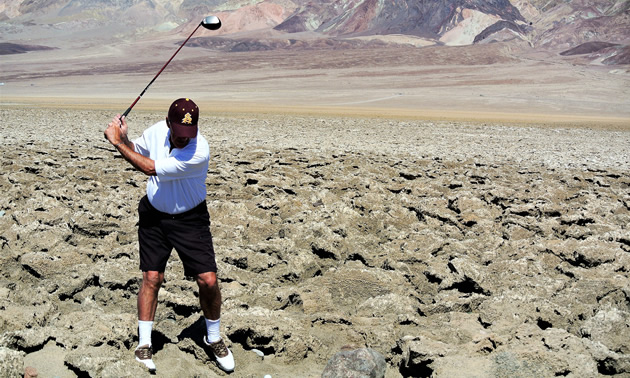Why the new 2019 golf rules are a welcome blessing for recreational golfers
Golf is an evolving game and the rules of golf are about to undergo massive changes as of January 1, 2019.

Golf is an evolving game and the rules of golf are about to undergo massive changes as of January 1, 2019. The first rules of golf were drafted in 1744, but the modern rules have not been revised since 1984, some 34 years ago. As a result, the United States Golf Association, the governing body of golf in North America, and the Royal and Ancient Golf Club (R&A) of St. Andrews, Scotland, undertook a five year collaborative process to modernize the rules. In total, there were 36 changes that reflect how the game should be played in the future. The rules went from 34 to 24, and include Etiquette, Definitions and The Rules of Play. There will also be a shorter Player’s Edition.
There were three major objectives for creating these new rules:
- Simplification of the rules to make them easier to understand/apply
- Making the rules less punitive
- Speeding up the pace of play
The criticism of golf is that the game is too difficult, too expensive and too time-consuming. As for the old rules, they are confusing and open to interpretation. The new rules should help speed up the game, something all golfers want. In addition, many of the new rules reflect how the average recreational golfer already plays the game, ignoring rules that seem unfair and trivial.
Some of the major rule changes include:
- Searching for a lost ball goes from five minutes to three minutes.
- If a ball becomes plugged, other than in a sand trap, the ball can be removed and cleaned without penalty. Drop in the general area but no closer to the hole.
- Golf balls do not have to be dropped from the shoulder, but from the height of the knee.
- Double ball hits are only counted as one stroke.
- The flag can be left in the hole while sinking a putt.
- Spike marks or animal marks on the green can now be repaired.
- No penalty for a ball or ball marker that moves by itself on the green—just put it back.
- No penalty for removing loose impediments in a bunker/relief area, or accidently touching the sand with your hand or club.
- Play “ready golf,” taking only 40 seconds to address and hit the ball.
- No penalty for accidentally moving your ball when searching for it in the rough—just replace the ball.
- If a ball is in motion and comes back to hit the golfer or equipment, there is no penalty.
- A new ball can be substituted without penalty when taking relief.
- GPS measuring devices are allowed on the course, unless forbidden by local club rules.
- You can touch the line of the putt with your putter.
- If the ball goes into the water, no relief can be taken on the opposite side of the water hazard (penalty area).
Relief areas replace hazards
The term “hazard” will be replaced with “relief area” and “water hazard” replaced with “penalty area.” Stakes that mark relief areas can be red or yellow. These stakes can also be applied to areas of forest, jungle, lava rock or bushes. Red and yellow stakes will result in a lateral drop and a one-stroke penalty. In establishing a relief area, use your longest club other than a long putter. Draw an imaginary line or lines to the flag and drop your ball within the relief area. Relief areas are hard to explain, so watch the videos on usga.org/rules.
Out of bounds or lost ball
If a ball is hit out of bounds (white stakes) or lost, play the ball using “stroke and distance procedure.” Stroke and distance is probably the most controversial rule in golf because it is so punitive, yet has not changed. Hitting a provisional ball only slows down the game and golfers should not be awarded for hitting a bad shot. See both Local Rules and New Rules for Golf for 2019 Unveiled at randa.org.
Pay attention to the local rules
Every golf course has local rules because of the unique terrain or layout of the course. These local rules are usually printed on the scorecards or explained by the starter/marshal.
- Under local rules, “stroke and distance” no longer exist when the ball is out of bounds or lost. This situation becomes a “lateral hazard.” Drop the ball nearest to where the ball crossed out of bounds or where lost, then establish a “relief area” and take a one-stroke penalty.
- If a ball cannot be played out of a bunker, drop the ball behind the bunker and take a two-stroke penalty.
- New stroke play, called “maximum score,” now exists, meaning once you double the par, pick up the ball and record the maximum score.
- Local golf courses can determine the Code of Conduct and set penalties for bad behaviour while on the course.
Many of the new rules will not apply to the PGA/LPGA tournaments. There are some rule changes including the role of the caddy, announcing your attention in picking up a ball or use of video reviews. As David Rickman, executive director of the R&A stated, “….the new rules do not change the game’s long-standing principles and character of the game.”
It should be noted that there are no new rules dealing with mulligans, tees on fairways, foot wedges, gimmies and poor math skills.








